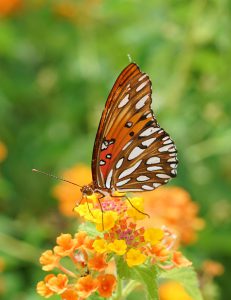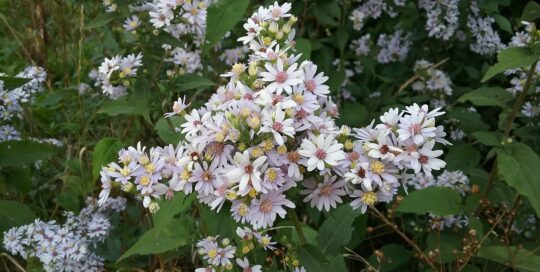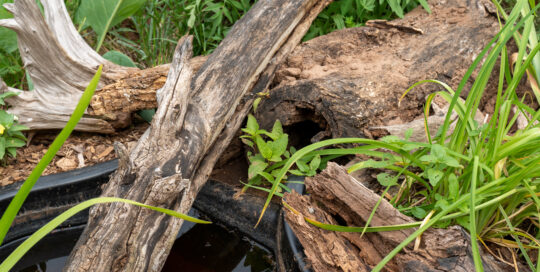Gulf Fritillaries and Other Fall Butterflies
Views: 1642

Fall is here, and the butterflies are thick. I haven’t finished moving yet, so I’m still able to enjoy the visitors to my established flowerbeds. I’ve had a few unusual ones already.
I saw my first ever Queen this weekend. They are not common this far north and east. I ran to get my camera so I could document it, but it didn’t stay still long enough to get a good picture. I’ve noticed this about many unusual butterfly visitors: Often they are just passing through. If I’m lucky, I can snap a blurry picture to document them on the Butterflies and Moths of North America website. I’ve notched a couple county records this way, but the Queen was not a record, just new to me.
The glory of my fall garden is my orange lantana. It is covered in Gulf Fritillaries. Although common, Gulf Fritillaries are high on my list of favorite butterflies. Bright orange on their upper side, their underside hindwings are a complicated pattern of white spots. Their forewing is shaded from orange to reddish orange, a striking combination when contrasted against the white spots. They are extremely photogenic from all angles.

Gulf Fritillary
Gulf Fritillaries lay their eggs on passion flowers. There are about 500 species in the passion flower genus, mostly vines, and some are natives to North America while some are not. For a long time, I was intimidated by passion flowers because they seemed so exotic. Any plant with a flower as crazy looking as that, I thought, must be hard to grow. Surely it wouldn’t be hardy enough to survive the poor soil and harsh climate of my Oklahoma garden. I resisted planting them for years simply because I didn’t think I was skilled enough to keep them alive.
Three years ago, because of my love for Gulf Fritillaries, I finally worked up enough courage to try my hand at passion flowers. It turns out that my angst was misplaced. Not only do passion flower vines thrive in my yard, they have taken over the areas where I have planted them. I never have to water them. I never had to weed around them. They compete successfully with anything I plant near them.

Passiflora caerulea
While the flowers are exotic and fun, my favorite part of growing passion flower vines is watching them get eaten. In late summer, I keep an eye out for damaged leaves, and invariably I find little black-spiked, orange caterpillars munching happily away on them. These are, of course, Gulf Fritillary caterpillars. This year I’ve had enough caterpillars that both my vines have been denuded, but these plants are hardy enough that I’m not concerned. If Oklahoma weather can’t kill my passion flowers; caterpillars don’t stand a chance.

Gulf Fritillary Caterpillar
In my yard I have Hardy Blue Passion Flower, Passiflora caerulea. This variety is native to South America. A friend has planted both native and non-native varieties, and she says her Gulf Fritillaries only lay eggs on her native vine. This isn’t too surprising; my vines get eaten for lack of anything tastier. But because I have it planted, my yard is adrift with Gulf Fritillaries. Glorious! Passion flowers are highly recommended for any butterfly garden in the south/southeast where Gulf Fritillaries are common.
Meet Leslie Miller
Leslie Ann Miller shares 3.5 acres in rural Oklahoma with birds, butterflies and wide variety of animals. She is currently transforming her yard with plantings…
Leslie's Recent Posts

Drummond’s Aster: a native beauty that benefits bees






